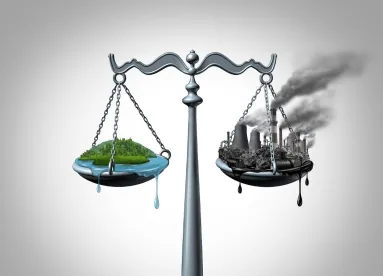The White House Council on Environmental Quality (CEQ) issued a proposed rulemaking on 31 July 2023 to implement Congress’s updates to the National Environmental Policy Act (NEPA) recently enacted in the Fiscal Responsibility Act1 and build upon President Biden’s Executive Order 14096 on Revitalizing Our Nation’s Commitment to Environmental Justice for All. The Biden Administration asserts that the proposed rulemaking seeks to modernize and accelerate environmental reviews under NEPA, encourage early community engagement, accelerate clean energy investment, strengthen energy security, and advance environmental justice.2
This proposed rulemaking by CEQ is Phase 2 of the agency’s amendments to NEPA regulations. CEQ issued a Phase 1 final rule on 20 April 2022, to restore requirements that the Trump Administration previously had rescinded in 2020. The Phase 1 final rule reinstated (1) the requirement that federal agencies consider “direct,” “indirect,” and “cumulative” impacts of proposed actions, including those associated with climate change and environmental justice communities; (2) the authority of federal agencies to determine the “purpose and need” of, and to develop and consider alternative designs or approaches to, the proposed project; and (3) CEQ’s NEPA regulations as a floor, rather than a ceiling, that federal agencies must meet in their environmental reviews.
To accomplish these objectives, CEQ’s NEPA Phase 2 focuses on five areas of change.3
-
First, the proposed rule seeks to quicken the development of beneficial infrastructure by streamlining the process by which it is approved. CEQ proposes to clarify that agencies will not be required to complete environmental impact statements (EIS) for projects that have significant and long-lasting positive impacts. However, the proposed rule does not define what this term means or how it would be applied in practice. For instance, long-term greenhouse gas (GHG) emissions reductions from a renewable project could outweigh the project’s short-term construction-related GHG emissions. Likewise, long-term wildfire risk reduction from a forest restoration project could outweigh the project’s short-term adverse effects on species habitat. In each case, under CEQ’s proposed rulemaking, an agency could reasonably determine that an EIS is not required.
-
Second, the proposed rule expands the methods at an agency’s disposal to create and utilize categorical exclusions (CE). Historically, CEs could only be established through a specific CEQ process; and, when a specific agency established a CE, that CE was limited to the exclusive use of that agency. Under the proposed rule, agencies are permitted to establish a CE through land use plans in programmatic EISs or environmental assessments or other equivalent planning or programming decisions. “Once established, agencies could apply CEs to future actions addressed in the program or plan, including site-specific or project-level actions,” and those CEs do not require NEPA analyses themselves.4
-
Third, CEQ’s proposed rulemaking will require agencies to consider reasonably foreseeable environmental trends in environmental reviews, including anticipated climate-related changes to the environment. An EIS would be required to include discussion of relevant risk reduction, resiliency, and adaption measures on the environment and public health.
-
Fourth, under the proposed rule CEQ reaffirms its commitment to environmental justice by requiring consideration of environmental justice in environmental analyses. The rule would encourage agencies to consider and regularly incorporate strategies to reduce disproportionate impacts on disadvantaged populations. Agencies will be required to discuss the potential environmental justice concerns in all EISs to ensure agency actions do not unintentionally impose disproportionate adverse health and environmental effects on disadvantaged communities. Further, agencies will be required to consider the needs of the community and identify a person to serve as Chief Public Engagement Officer responsible for facilitating community engagement across the agency.5
-
Fifth, the proposed rule explicitly rolls back provisions established by the previous administration’s 2020 NEPA rule increasing requirements on what public comments must contain to be considered by agencies. Also in the rollback is a proposal to remove the requirement that litigants post monetary bonds when seeking a preliminary injunction against a project, and to restore the judicial prerogative to provide injunctive relief when NEPA has been violated.
This rule is open for public comment through Friday, 29 September 2023. CEQ will hold virtual public meetings on the proposal on Saturday, 26 August; Wednesday, 30 August; Monday, 11 September; and Thursday, 21 September.
FOOTNOTES
1 For more on Fiscal Responsibility Act’s impact on NEPA, please see our alert on the topic found here.
2 See Press Release, Biden-Harris Administration Proposes Reforms to Modernize Environmental Reviews, Accelerate America’s Clean Energy Future, and Strengthen Public Input, The White House (July 28, 2023).
3 See 88 Fed Reg. 49924 (July 31, 2023).
4 Id. at 49938.
5 CEQ will look to Executive Orders 12898 and 14096 to guide its application of environmental justice.








 />i
/>i

